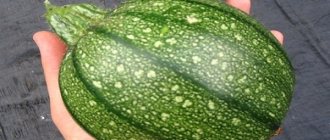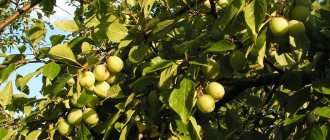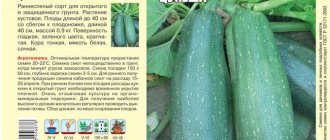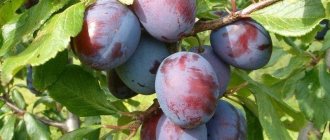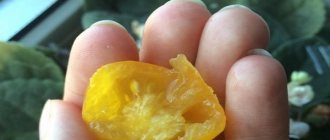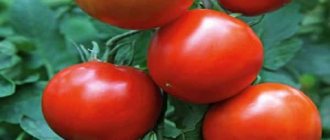Japanese mizuna kale, or mitsuna salad as it is also called, is still considered something extraordinary in our country. Although such a plant is gaining more and more supporters in its ranks every day. It is often called cabbage for the lazy, because it does not require much care and can even be grown at home in a pot. This plant has a pleasant spicy taste, in addition, it is incredibly beautiful and healthy, for which it is valued in its homeland in Japan.
Description
This is an annual or biennial plant with long light green corrugated or smooth leaves up to 60 cm long, growing horizontally or upward. The height of the lush bush is up to half a meter, the rosette is lush, spreading, reaching 90 cm in diameter.
Most varieties have openwork leaves with heavily dissected edges, but there are varieties with whole, long lance-shaped leaves. The taste of cabbage is sweet or spicy, reminiscent of radishes or mustard. When grown for two years, Japanese cabbage produces a root vegetable with pulp that tastes like rutabaga.
A little history
Mizuna cabbage comes from Japan. The islanders are big fans of a balanced and healthy diet. Their diet contains a lot of greens. One of the options for green vegetables is Japanese Mizuna cabbage, which the Japanese have been growing since the 16th century.
The salad vegetable is popular due to its chemical composition: with regular consumption, you can forget about some medications. Mizuna cabbage (pictured below) or, as it is also called, Mitsuna, is highly prized, not only in Japan, but also in North America and Western Europe. In Russia, people learned about this healthy vegetable relatively recently, but it already has fans among our compatriots.
Advantages and disadvantages
Culture has many advantages:
- contains microelements (phosphorus, calcium, potassium, selenium, iron) and vitamins (a lot of vitamin A and E);
- low in calories, but still nutritious;
- has a more delicate taste compared to similar products due to the low content of mustard oils;
- a large amount of beta-carotene helps strengthen vision and rejuvenate the skin;
- can be used all summer;
- increased potassium content has a beneficial effect on the cardiovascular system.
Japanese cabbage has very few disadvantages:
- It cannot be stored for a long time, unlike the types of cabbage we are used to, since it does not form a head of cabbage.
- If the leaves are not eaten immediately, they will wither and lose their flavor.
- It accumulates nitrates quite easily - do not get carried away with nitrogen fertilizers.
Characteristics of Mizuna cabbage
The plant is resistant to weather fluctuations and tolerates both low temperatures and heat quite well. After cutting, young leaves grow back quickly. You can receive fresh products until late autumn.
The amount of protein, fat, carbohydrates and dietary fiber in Japanese cabbage is about 5%, almost everything else is water . But it contains ions of potassium, calcium, phosphorus, iron, as well as manganese, zinc, selenium and copper, which are included in the active centers of enzymes that provide immune protection and an antioxidant effect. In addition, this cabbage is rich in vitamins A, K, C, E, PP and the entire group B. Therefore, its consumption contributes to:
- improving intestinal motility;
- cleansing the body;
- enriching it with vitamins and biologically active substances.
Fresh Mizuna cabbage leaves added to the salad add a pleasant spiciness and strengthen the immune system.
Varieties
So far, only some varieties of Japanese cabbage are included in the State Register of Breeding Achievements of the Russian Federation.
The most famous among them:
- Mermaid.
- Mizuna.
- Emerald pattern.
The varieties are resistant to bolting and adverse weather conditions (heat, drought, frost). All three varieties are used in salads and as a seasoning for hot dishes.
Mermaid
This is a mid-ripening variety (60–70 days) with a horizontal or slightly raised rosette up to 40 cm high and up to 75 cm in diameter, on which there are up to 60 dark green, highly dissected, smooth leaves with large denticles along the edges.
Productivity: from one bush - 5–6.5 kg/m2.
Taste: delicate, with a slight mustard aftertaste.
Where to buy, price: EURO-SEMENA LLC, price in Moscow 12–18 rubles, in St. Petersburg 15–19 rubles.
Mizuna
The variety is also mid-season (60–70 days), the rosette is located horizontally or slightly raised, up to 40 cm in height and up to 65 cm in diameter, forms up to 60 dark green medium-sized smooth lyre-pinnate leaves with large cuts along the edge.
Productivity: per bush - 6.7 kg/m2.
Taste: delicate, spicy.
Where to buy, price: SEMCO-JUNIOR LLC, price in Moscow 29 rubles, in St. Petersburg 13 rubles.
Emerald pattern
The variety is mid-early (60–65 days), the rosette is slightly raised, up to 35 cm in height and up to 60 cm in diameter, it produces a lot of leaves - up to 150. They are medium in size, green, smooth, with large cuts along the edge, lyre-pinnate in shape.
Productivity: per bush - 5–5.2 kg/m2.
Taste: has an apple tint.
Where to buy, price: AGROFIRM POISK LLC, price in Moscow 16–18 rubles, in St. Petersburg 21 rubles.
Planting and care
The seeds are sown in the ground in early spring or in the second half of summer, since the crop is quite cold-resistant (can withstand frosts down to –4 °C) and quickly reaches technical ripeness.
Important! Japanese cabbage does not tolerate transplantation very well.
Landing
In order for the cultivation of Mizuna, Mermaid and Emerald Pattern from seeds to be successful, it is necessary to create favorable conditions. For this purpose, choose a sunny, open area - in the light, cabbage forms the maximum number of leaves. Loves light, neutral, well-drained soils: if the site has loam, you need to add sand and black soil or humus until loose soil forms.
The bed is dug up as soon as the snow melts, watered well with warm water and covered with black film to warm it up. To plant cabbage, the soil must warm up to +4 °C .
Sowing is done as follows:
- In the bed, grooves are made half a centimeter deep at a distance of 30 cm.
- The grooves are shed with warm water.
- Place the seeds at a distance of 20–30 cm. They should germinate on the 3rd–4th day at a soil temperature of 3–4 °C. If the crops are frequent, you will have to thin them out, which is undesirable, since cabbage sprouts are very tender and easily damaged.
- Sprinkle the planted seeds with loose soil or sand.
- Cover with spunbond or lutrasil until shoots emerge.
The optimal temperature for plant growth and development is 15–20 °C.
Watering
The crop tolerates heat well , but this does not mean that it does not need soil moisture. After germination, water only when the soil becomes dry.
Young shoots are very tender, so you need a watering can or hose with a fine spray. This is necessary in order not to damage the young shoots of the plant. An adult plant requires rare watering, only in extreme heat, but plenty of watering so that the leaves grow juicy and tasty. Cabbage easily recovers from drought, but watering should be infrequent but constant.
Top dressing
Twice during the growing season, Japanese cabbage is fertilized with mineral fertilizers: phosphorus and potassium (according to the instructions). They also use liquid organic fertilizer - vermicompost.
It is better not to use fertilizers containing nitrogen at all or to apply them only in small portions, since the crop accumulates nitrates in the green mass.
An infusion of wood ash is perfect for root feeding (3 tablespoons of powder per 1 liter of water, leave for 5–7 days).
Mulching
To better retain moisture in the root area and to protect against weeds, Japanese cabbage is mulched - with sawdust, grass clippings or straw .
There is no need to hill it up like regular cabbage, since the leaves located low from the soil can begin to rot if soil gets on them.
Growing Mizuna Cabbage
Japanese leaf cabbage places special demands on agricultural technology. For planting, they choose elevated areas of land, because Mizuna does not tolerate stagnant water, although it loves moisture. It thrives equally well in partial shade and in full sun and can withstand low temperatures. This cabbage grows even at -2–3 °C, so the bushes are left in the beds until frost, providing themselves with fresh vitamins.
The best predecessors for Japanese cabbage are nightshade crops, beets, carrots, and onions. It is unacceptable to plant Mizuna after any cruciferous vegetables: not only cauliflower or white cabbage, but also turnips, radishes and other members of the family.
Mizuna is cultivated without seedlings, sowing seeds directly into the ground. Due to the plants' resistance to cold, planting begins in April - May. In the southern regions, these dates shift to March, and in protected soil conditions, especially in heated greenhouses, almost year-round cultivation of Mizuna cabbage is possible. This unpretentious plant grows in any climate.
Video: practical tips for growing Japanese cabbage
Since the seeds are small, you need to try to plant them further away. Taking into account the future size of the rosette, 30–35 cm are left between rows, and 20–25 cm between plants. As a rule, it is not possible to maintain large intervals between seedlings, so the greens are thinned out to ensure full growth for the remaining bushes, and the plucked plants are eaten. , enjoying the taste sensations.
Mizuna cabbage needs intensive watering to grow, but does not tolerate stagnation of water.
Cabbage seeds, like all small seeds, I mix with sand before sowing. Then they do not fall on the ground in a heap, but are evenly distributed throughout the bed. It takes approximately 2–2.5 months after germination for the plants to fully mature. As the bushes grow, I begin to cut off the emerald, juicy, ripe leaves, and their place is soon taken by young ones. This is very economical: throughout the entire summer season you can eat fresh vitamins by planting only 4–5 plants. Experience shows that there is no point in planting more bushes - after some time, the taste of Mizuna becomes boring, and you want something else.
Harvest and storage
In open ground, Japanese cabbage can grow for up to three months. The leaves need to be cut off periodically (as soon as they reach a length of 10–12 cm). They grow back after 8–15 days due to the awakening of the apical bud. Thus, the harvest continues throughout the summer.
Cut leaves can be eaten fresh in salads, pickled, frozen or dried (used as a seasoning). In autumn, cabbage bushes are pulled out by the roots, cleared of soil, and the root is cut off, leaving the petiole. They can be stored this way in the refrigerator for up to a week.
Pest varieties
The leaves of the plant are often damaged by the cruciferous flea beetle: it gnaws holes and, as a result, the leaf becomes unfit for consumption. Tobacco dust works well against it:
dust the bush and the ground around it;- sprayed with a solution in a ratio of 1:10.
Ordinary wood ash is also a simple and effective remedy:
- dust the plantings;
- sprayed with ash infusion (prepared within a week and calculating 3 tablespoons per 1 liter of water).
It is not recommended to use chemicals against pests , since the plant accumulates harmful substances in the leaves. In order not to expose yourself to danger, use only natural remedies and in no case neglect this rule.
Diseases
This vegetable is resistant to most diseases, but it is still susceptible to fungal diseases:
- clubroot;
- false dew
Kila
The fungal form of the disease mainly affects ornamental and vegetable crops. The disease is expressed in the appearance of growths on the roots of the plant. The affected crop stops growing, the leaves lose color, the stem begins to dry out and become deformed. You can determine the presence of the disease by pulling it out of the ground and examining the roots.
Prevention
To prevent the development of this disease, you need to inspect the plants before planting; it is better to discard weakened or deformed sprouts immediately. Liming the soil will also help prevent the disease. Before planting, you need to mix the soil with lime, at a rate of 1 kg per 4 sq.m.
False dew
Downy mildew is also a fungal disease. It is expressed in the appearance of yellow-brown spots on the first full leaves of the vegetable.
Prevention
- watering with warm water;
- crop rotation;
- soil treatment before planting, 200 gr. 1% Bordeaux mixture per 10 liters. water, use the mixture as a watering liquid 24 hours before planting.
Possible problems and their prevention
| Incorrect agricultural technology | Problem encountered | Prevention |
| Watering too much | The cabbage begins to rot | Water less frequently, only when the soil is dry. |
| Fertilizing with nitrogen fertilizers | Accumulates nitrates in leaves | Use only potash and phosphorus fertilizers |
| Sowing after related crops (cabbage, radish, watercress, radish, mustard greens) | Affected by pests | Plant after tomatoes, cucumbers, potatoes, herbs, legumes |
Cabbage can be found in every garden plot. It is important not only to take good care of it in order to obtain a generous harvest, but also to choose the right type. On our website you will find photos, descriptions and step-by-step instructions for growing Broccoli, Brussels sprouts, Red cabbage, Peking, Calrabi, Savoy, Cauliflower, Dutch selection vegetables, as well as early varieties.
Beneficial features
Russian consumers consider overseas cabbage a salad. It is in demand due to its composition of useful substances. It includes:
- vitamins PP, B1, B2;
- ascorbic acid;
- fiber;
- biologically active phosphorus, potassium, iron, calcium.
Incoming micro- and macroelements make cabbage healing. The Japanese noticed this property back in the 16th century :
- increasing immunity;
- reducing the risk of neoplasms;
- normalization of cholesterol, removal of poisons and salts;
- improving intestinal function and regulating water balance and metabolic processes in the body;
- strengthens blood vessels, protects against the appearance of plaques;
- fight against vitamin deficiency in the spring-autumn period.
Cabbage is indicated for anemia and heart pathologies.
On a note. The low-calorie content of the product determines the use of light green vegetables in dietary nutrition.
There are no contraindications for consumption of cabbage, except for individual intolerance.
